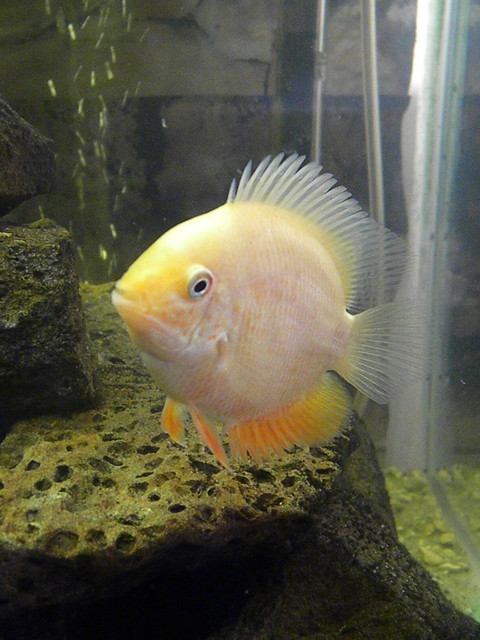 |
| Pterophyllum altum - Photo by Joel Carnat |
Altum Angelfish is one of the largest and colorful cichlids. They are known for its timid traits that even a small shadow could frighten them. Though they are timid and a bit frightened, when they start to get accustomed to its surroundings, they can be good pet fish. But this fish is not that friendly to smaller fishes in the reefs though they may join the school of other fishes, they still get aggressive and very territorial as they grow older and when they in the breeding stage. It was in the early 1900s when the first altum angelfish was introduced and established in America. There have been numerous colors and patterns available in every pet shop, retailer and wholesalers since then.
Altum Angelfish has a habit of always yawning. Their mouths are larger than any angels. These fishes are very rare and most of the time, you will notice some defects on their skin in a pet shop because of the shipping and sometimes because of the fighting scene from other predators. You will also notice some black pepper-like sprinkles on their skin. This is an infection called black spot disease. Adult altum can grow up to 13 to 15 inches or more. You must provide a large and spacious tank or aquarium for them.
When it comes to the altum angelfish diet, this species is not a picky eater. They most especially like to feed on mosquito larvae, blood worms, Daphnia and some live brine shrimp. They prefer these foods to be frozen first. Make sure to feed them once a day then leave one day out before you feed them again to make sure that they really digested it all. Brine shrimp can also help their digestion and can even prevent constipation. Altums also like to eat the substrate on their tanks which can injure their delicate mouths Though most cichlids are peaceful, altum can be quite aggressive and territorial when it comes to space on their tanks. Make sure to use coarse gravel with more rounded edges to prevent this harm to happen to your altums.


















